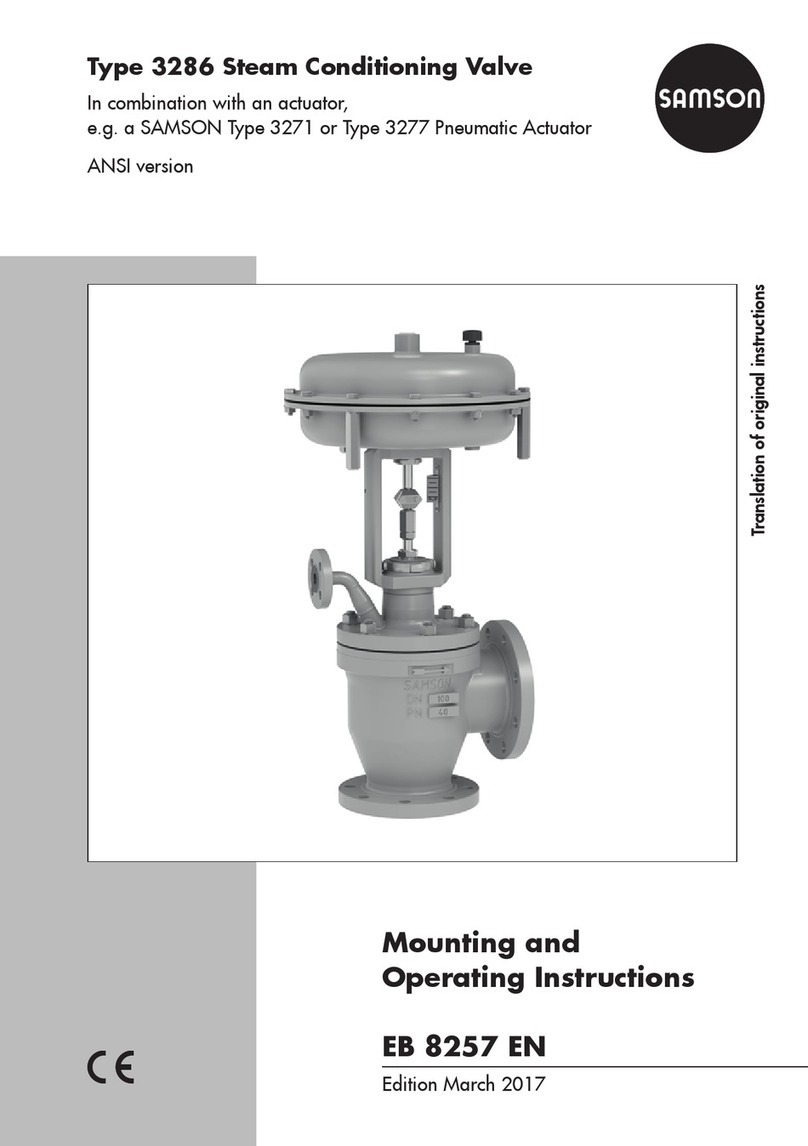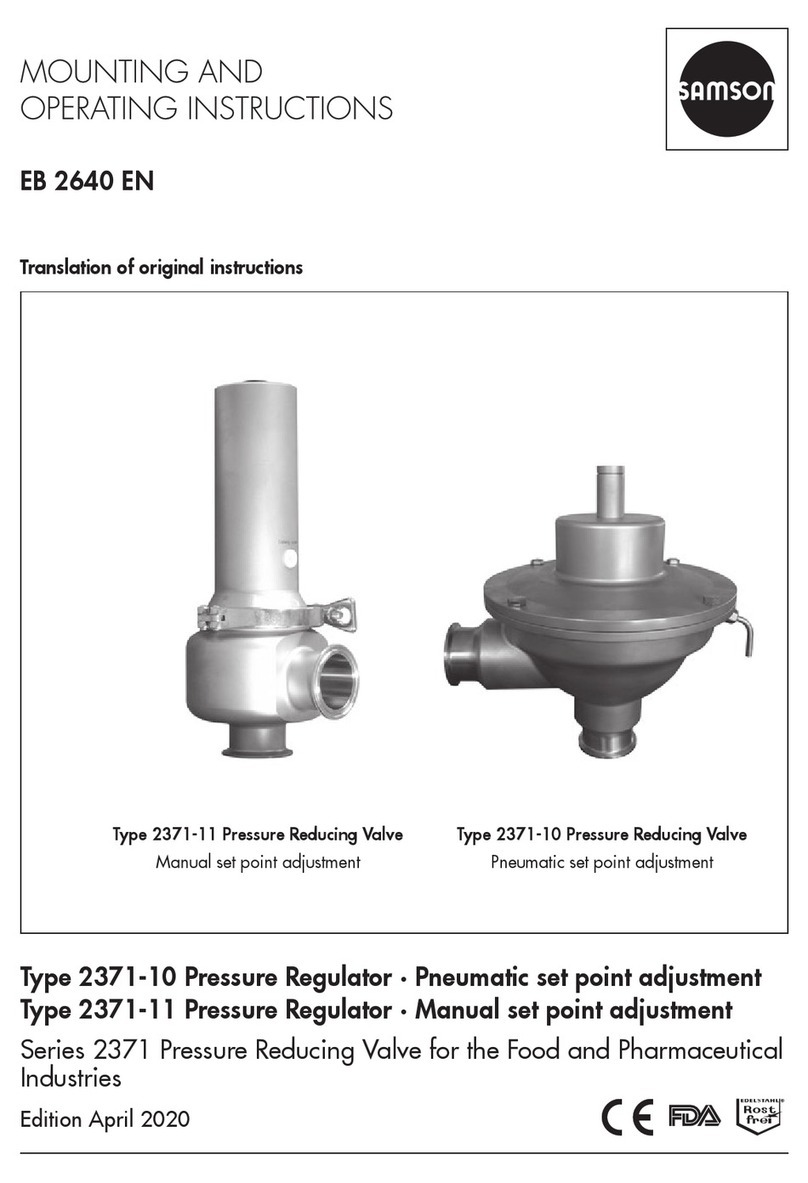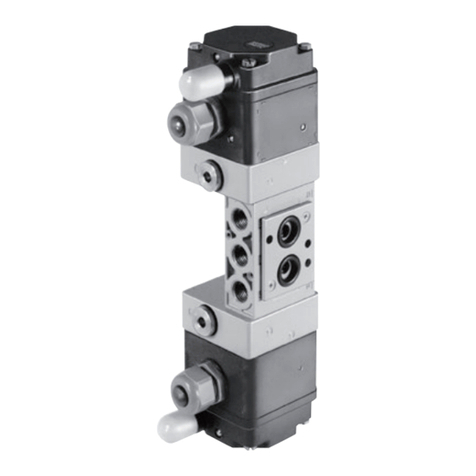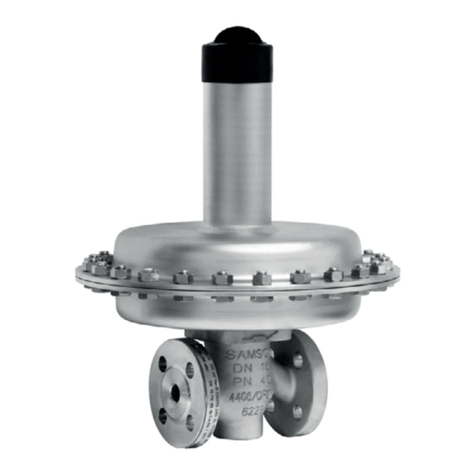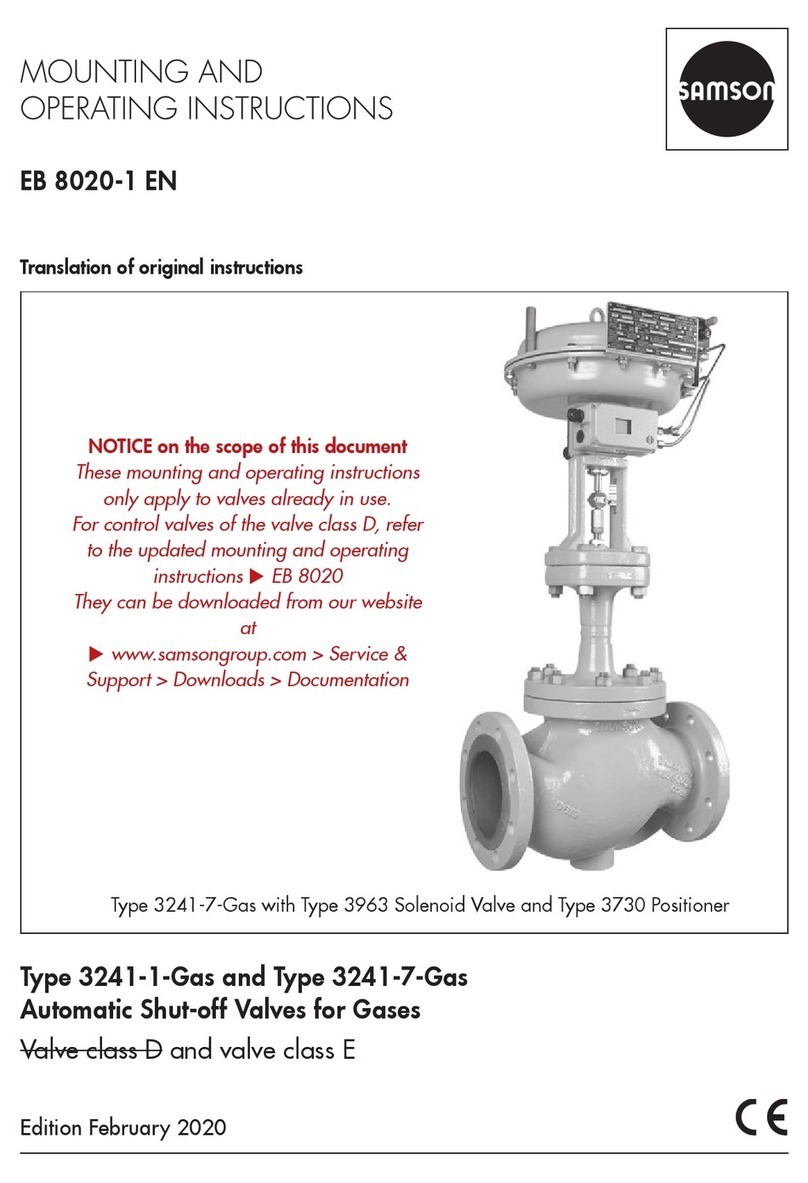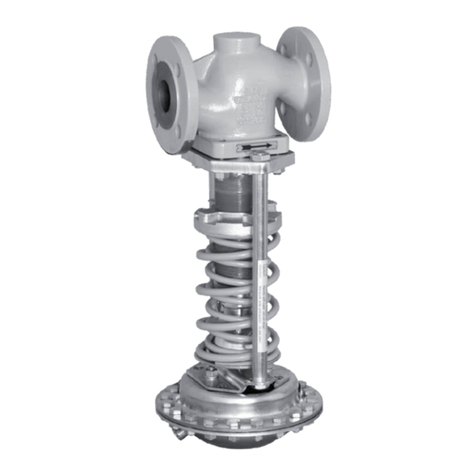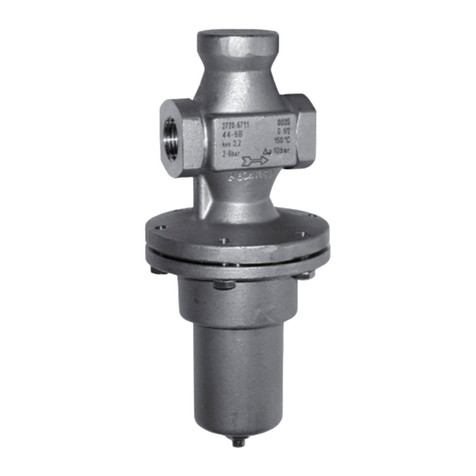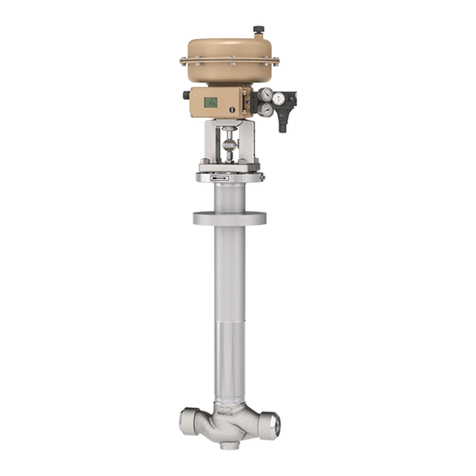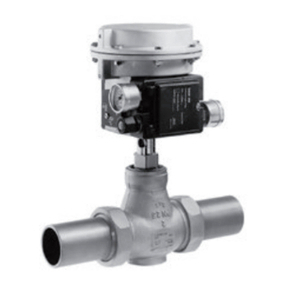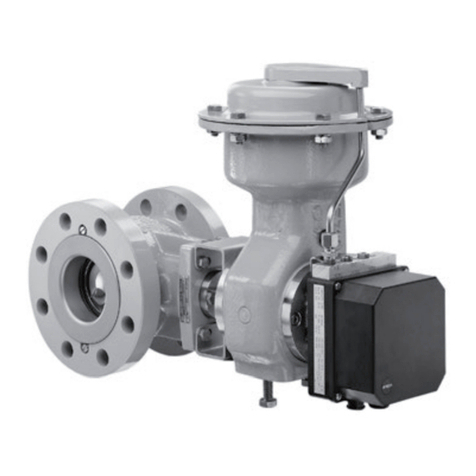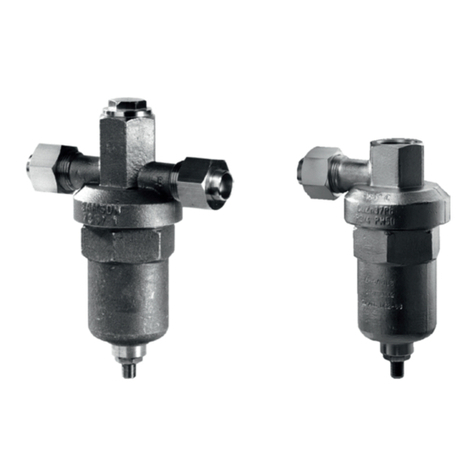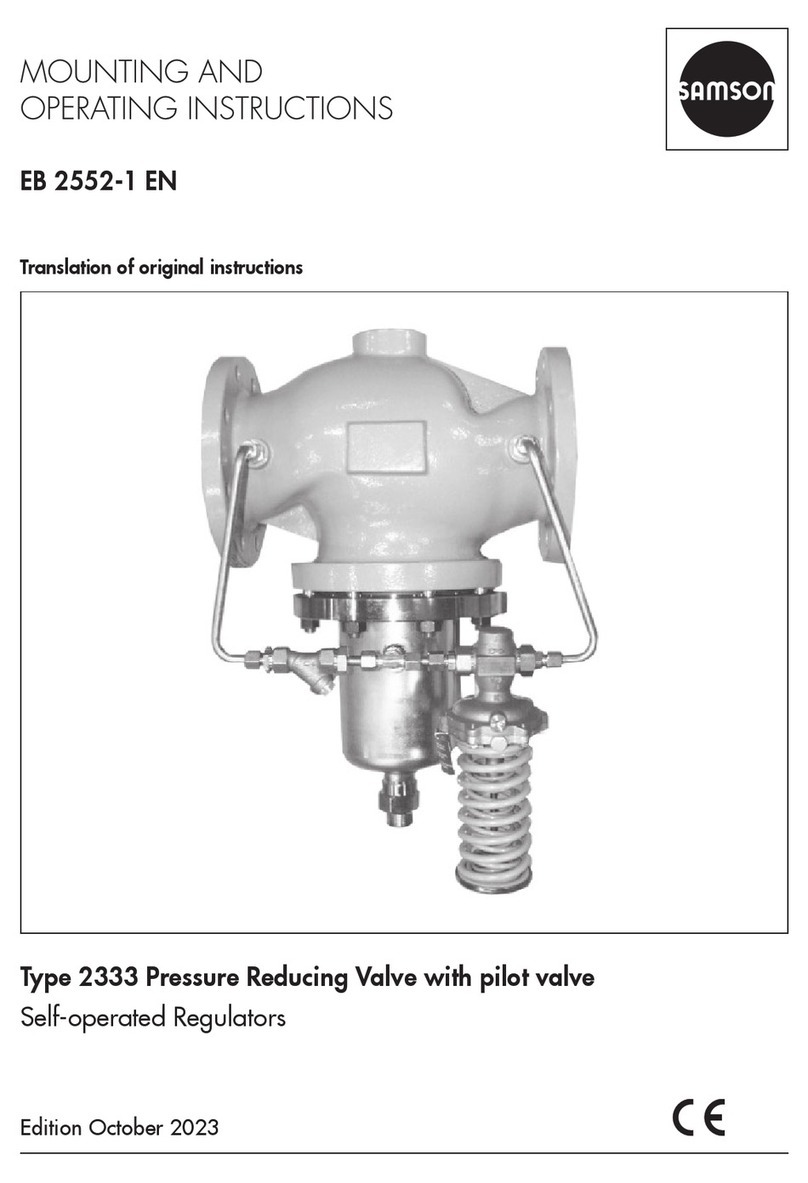
Contents
EB 8055 EN
1 Safety instructions and measures ................................................................1-1
1.1 Notes on possible severe personal injury ......................................................1-4
1.2 Notes on possible personal injury ................................................................1-5
1.3 Notes on possible property damage.............................................................1-6
1.4 Notes on the use of an RFID tag ...................................................................1-7
1.5 Warnings on the device...............................................................................1-8
2 Markings on the device ..............................................................................2-1
2.1 Valve nameplate .........................................................................................2-1
2.2 Actuator nameplate.....................................................................................2-2
2.3 Material identication number .....................................................................2-2
2.4 Label when an adjustable packing is installed ...............................................2-2
2.5 Optional RFID tag.......................................................................................2-2
3 Design and principle of operation ...............................................................3-1
3.1 Fail-safe positions .......................................................................................3-1
3.2 Versions .....................................................................................................3-3
3.3 Additional ttings........................................................................................3-3
3.4 Accessories ................................................................................................3-4
3.5 Technical data ............................................................................................3-4
4 Shipment and on-site transport ...................................................................4-1
4.1 Accepting the delivered goods .....................................................................4-1
4.2 Removing the packaging from the valve........................................................4-1
4.3 Transporting and lifting the valve..................................................................4-1
4.3.1 Transporting the valve .................................................................................4-2
4.3.2 Lifting the valve...........................................................................................4-3
4.4 Storing the valve.........................................................................................4-4
5 Installation.................................................................................................5-1
5.1 Installation conditions..................................................................................5-1
5.2 Preparation for installation...........................................................................5-3
5.3 Mounting the device....................................................................................5-3
5.3.1 Mounting the external anti-rotation xture.....................................................5-4
5.3.2 Mounting the actuator onto the valve..........................................................5-14
5.3.3 Installing the valve into the pipeline ............................................................5-16
5.4 Testing the installed valve...........................................................................5-16
5.4.1 Leak test...................................................................................................5-17
5.4.2 Travel motion............................................................................................5-18
5.4.3 Fail-safe position.......................................................................................5-18
5.4.4 Pressure test..............................................................................................5-18
